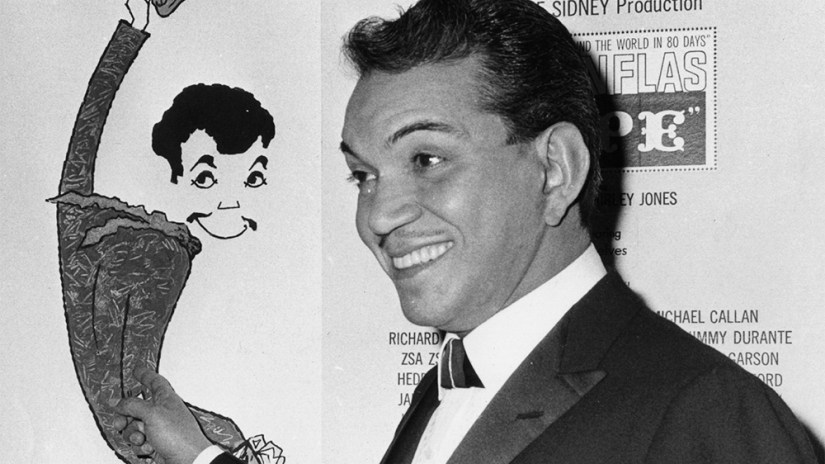
My previous post on Cantinflas was a collection of visual items and links I thought would be entertaining. Further reading has given me more things to say about Mario Moreno and his wonderful character. I want to share more about his life and work. It also helps me to assemble my notes for future reference.
Moreno was born on August 12, 1911 to a poor family. At fifteen, they sent him to an agricultural school, but after about nine months there he ran off to become an actor in a carpa, which is a traveling tent show. In the history of comedy, such itinerant troupes are the birthplace of many great performers. To keep his parents from finding him, he took the stage name “Cantinflas”
Initially, he performed a variety of parts. He was a dancer, he could be a comic bullfighter or a boxer who hams it up in the ring for laughs. These are all great experiences for developing the physical comedy component of his future characters. Comic bullfighting, by the way, is still a popular entertainment in Mexico. I found this very amusing video of a vintage example.
Cantinflas was equally well known for his verbal comedy, and there is a story about how that came to be. One evening, he was pressed into service as the master of ceremony for the show. He had never spoken for an audience before, and he was terribly nervous. When he did speak, what came out made no sense. He fumbled his words so badly, the audience found it funny. He had unintentionally created something special, and he developed his comedic style to take advantage of this happy accident. He used the tools of gibberish, double-speak, mispronunciation and wild exaggeration. He became so good, a word was created to describe it: Cantinflear.
I admit I had previously mistaken Cantinflas to be a rural peasant character. In my book, I discuss the archetype of the rustic, and his appearance fits the description. I have learned that he is part of the tradition of the pelado, which refers more to the urban poor. Specifically, Cantinflas is the primary example of what is called a peladito. Here is how Moreno himself describes the character…
“The peladito is the creature who came from the carpas with a face stained with flour or white paint, dressed in rags, the pants below the waist and covered with patches, the belt replaced by an old tie, the peaked cap representing a hat, the ruffled underwear that shows at any provocation, the torn shirt, and gabardine across his left shoulder.”
Cantinflas is often compared to another tramp, Charlie Chaplin. In fact, after he saw Cantinflas in his film Ni sangre ni arena, Chaplin is said to have called him “The best living comic in the world.” Like Chaplin’s Tramp, Cantinflas was an everyman, an underdog, struggling to survive in the world. Both men made films about circuses and politicians. Each was, however, customized for the culture he existed in. If you wanted to create a comic character in this vein, keep that in mind.
During the era of silent films, American movies worked just as well in Mexico as in any other country in the world. But when those stopped being produced, a new market for sound films in the Spanish language was created and filled by local talent. This was the beginning of the golden age of Mexican filmmaking. Because of this, Mario Moreno as able to become a superstar in Latin America and Spain. He has been honored with a star on Hollywood’s Walk of Fame.

Success didn’t cause Moreno to forget where he came from. He was quite philanthropic and supported charities for the poor. He was also president of the Mexican actors guild, and first secretary-general of the Independent Film Workers union. He continued to support the working man.
For further reading, I recommend this blog post.
Click THIS LINK to learn about this Google Doodle.

